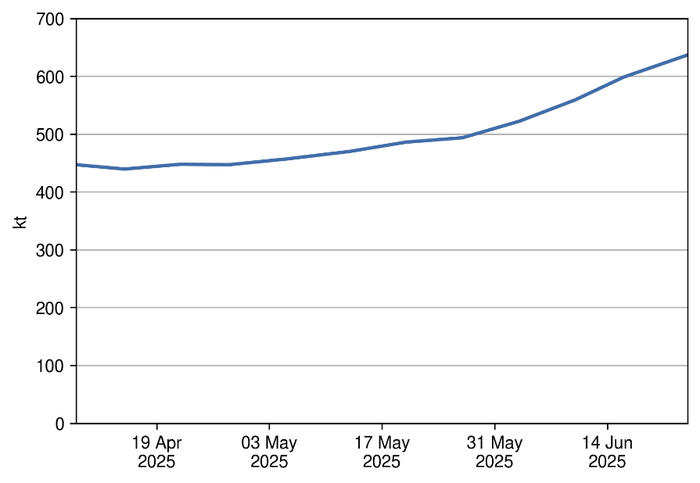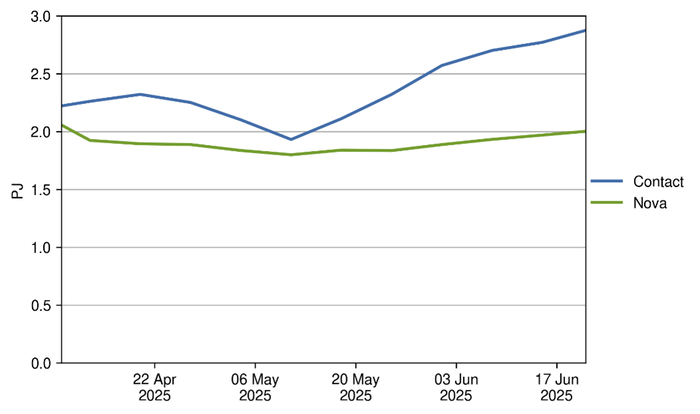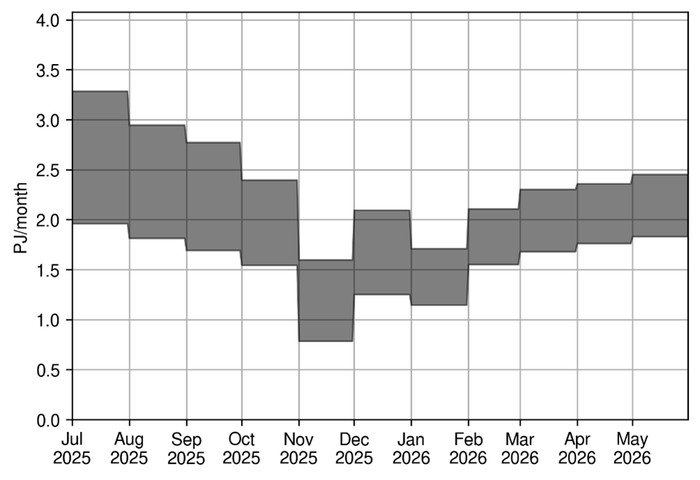Eye on electricity
The role of thermal generation
New Zealand’s electricity is generated from hydro, wind, solar, geothermal and thermal fuel sources. Thermal fuels include coal, natural gas and diesel and are an important part of ensuring the security of electricity supply.
Gas provides flexible electricity supply by fuelling large power plants (generation units) like Genesis’ Huntly 5 and smaller ones like Contact's Stratford peakers or Nova's Junction Road and McKee peakers. Coal or gas is used to fuel the three Rankine units operated by Genesis.
Contact and Genesis also operate generation units that can burn diesel. Contact’s diesel generation comes from the 155-megawatt (MW) Whirinaki peaker plant which primarily supports the electricity system with short-term generation during peak demand. Genesis’ 50MW peaker unit (Huntly 6) can be fuelled by diesel but is usually run using gas.
Thermal generation provides security when demand for power is high, or in dry years when there is less hydro generation. Coal is typically imported, and gas is produced in New Zealand. In recent years, New Zealand’s gas supply has been falling, which has created uncertainty about the amount of gas available to generate electricity. This makes it important to understand how much gas and other thermal fuels is available to ensure security of New Zealand’s electricity supply.
Improving thermal fuel information availability
In March 2025, the Authority published a Clause 2.16 notice requiring thermal generators to provide information on their thermal fuels, to improve our understanding of thermal fuel availability. Key information gathered under this notice is presented in our thermal fuel dashboard. Figures 1-3 repeat information presented in the dashboard.
Figure 1 shows how the coal stockpile increased from 447 kilotonnes (kt) at the start of April to 641kt by the end of June. The current stockpile is roughly equivalent to 1,200 gigawatt hours (GWh) of electricity, or enough to power about 150,000 households for a year.

Gas is typically consumed as it is produced. However, Contact and Nova can store gas in the Ahuroa gas storage facility for use at a later date. Figure 2 shows their gas storage since the start of April. Contact's gas storage increased from mid-May to June while its gas supply was increased when Methanex was shut down. Total gas storage of 4.9 petajoules (PJ) at the end of June is enough to generate roughly 660GWh of electricity, which is enough to power about 83,000 households for a year.

Figure 3 shows the range (minimum to maximum) of expected contracted gas per month available for electricity generation across Genesis, Contact and Nova. It shows they expect to have more gas available over winter when electricity demand is higher, and less over summer.

The thermal fuel dashboard also shows that diesel storage has been steady around 3.9 million litres. This storage volume is relatively small and is not sufficient for extended periods of generation because of the role diesel plays in providing short-term cover.
The future of thermal generation
As New Zealand’s electrification advances and more intermittent generation like solar and wind is commissioned, the role of thermal generation will change. Thermal generation can provide useful flexibility for when the wind is not blowing, or the sun is not shining.
Using wood pellets as fuel for the Rankine units is also being investigated as a future fuel source. In 2023, Genesis successfully trialled black torrefied wood pellets as a lower emissions alternative to coal.
Genesis, Mercury, Meridian and Contact have also recently signed a non-binding term sheet to progress towards a national strategic energy reserve at Huntly power station. This will help support the security of New Zealand's electricity system and is intended to be in place by 1 January 2026.
Thermal generation isn’t the only part of ensuring a secure electricity system. We publish weekly security of supply snapshots on our website to capture other aspects of security of supply to explain how well the electricity system is functioning. These include information on national hydro storage, forecast rainfall, generation outages, spot prices and forward prices.
Related News
Electricity Authority lodges formal complaint over alleged Code breach
The Electricity Authority Te Mana Hiko has lodged a formal complaint with the Rulings Panel alleging a breach of the Electricity Industry Participation Code 20…
Exemptions from the Code for 2025
This year, the Electricity Authority Te Mana Hiko approved 11 exemptions and three exemption amendments from obligations in the Electricity Industry Particip…
Seeking feedback on 11 July 2025 under-frequency event
The Electricity Authority Te Mana Hiko is seeking feedback from participants who may be substantially affected by the under-frequency event of 11 July 2025.